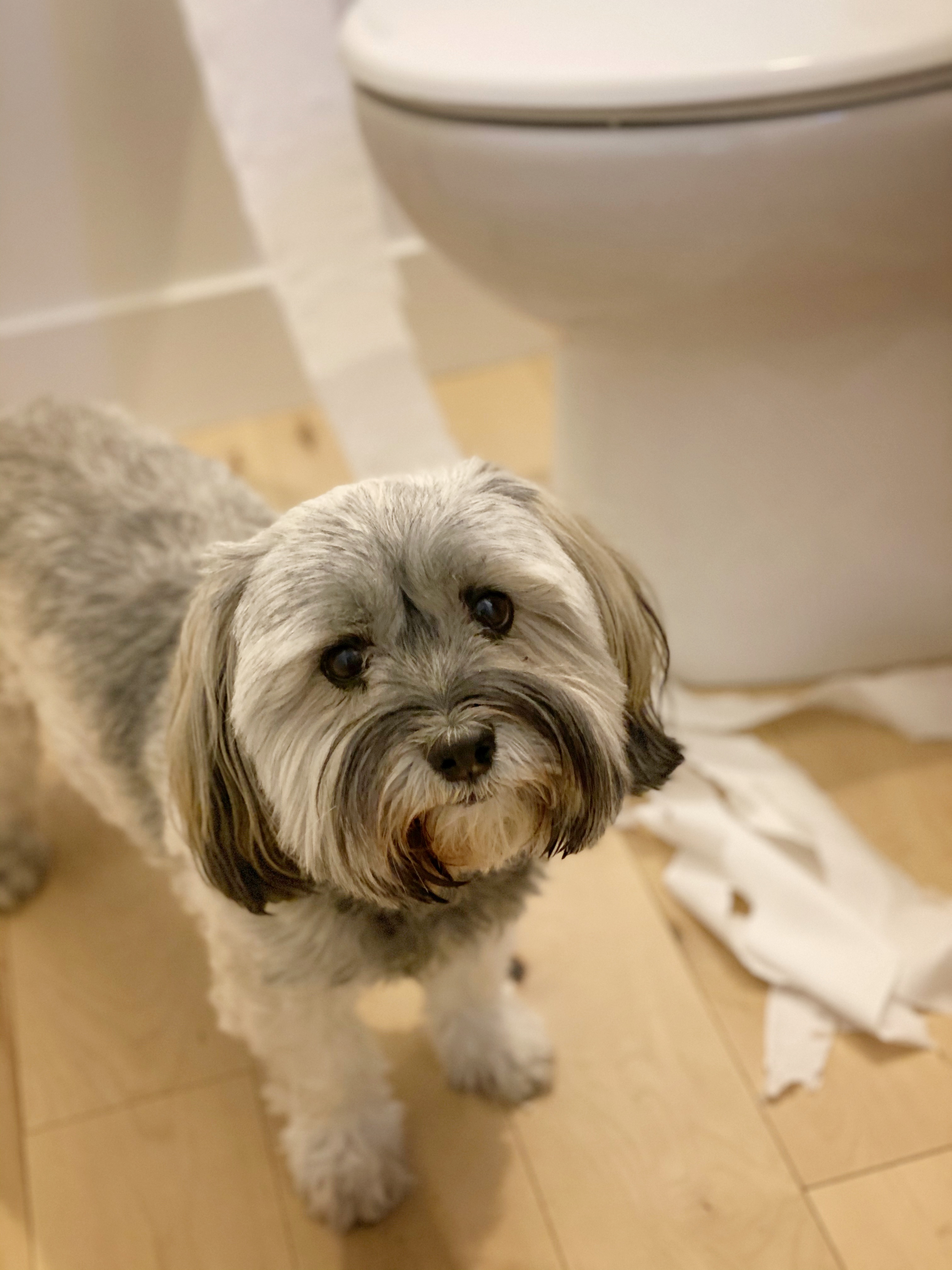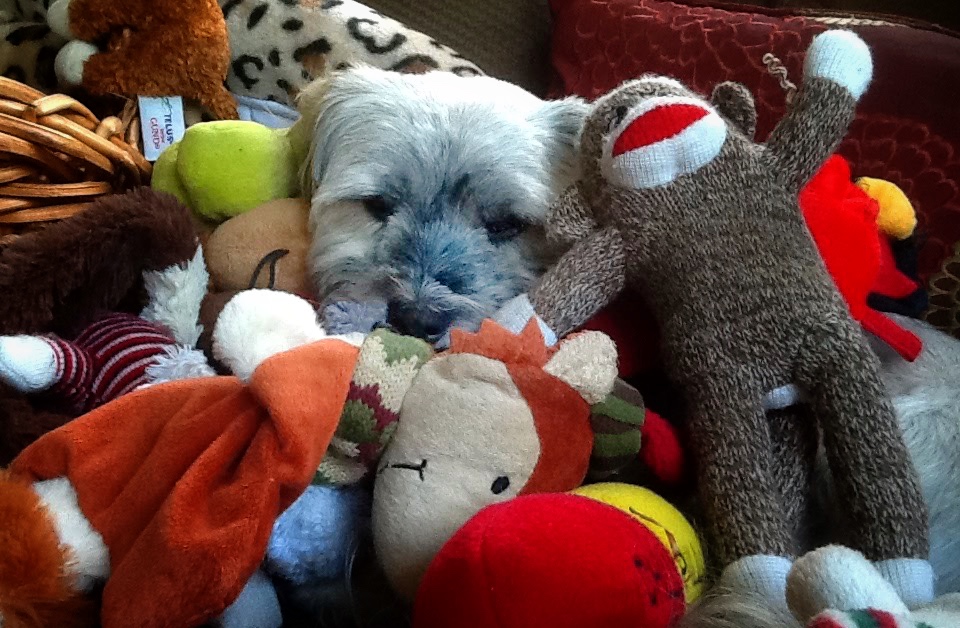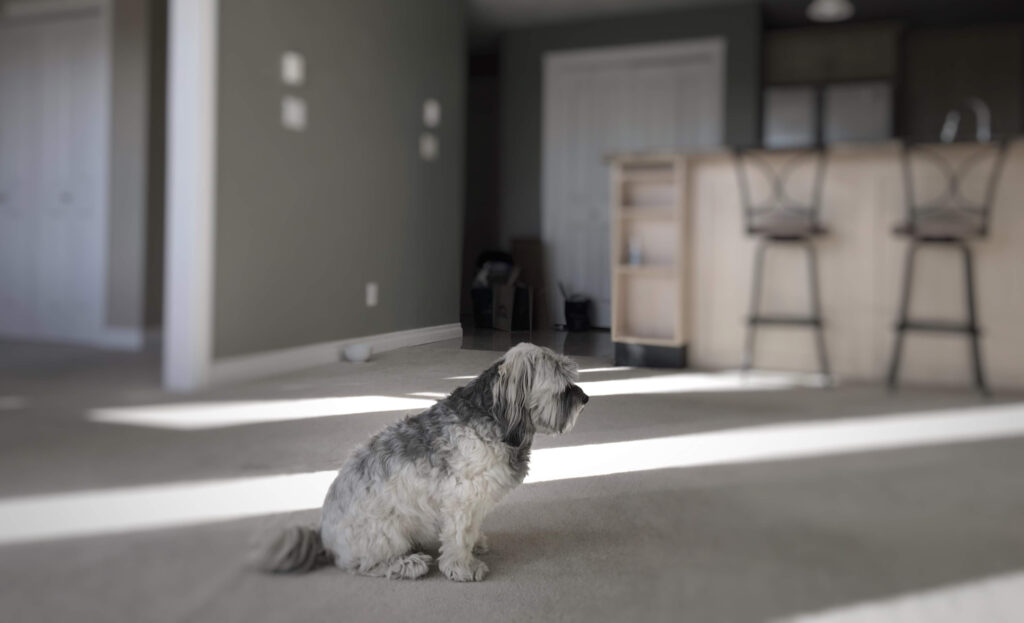Imagine it’s Saturday night. You’re watching TV with your partner, eating popcorn, enjoying a glass of wine. One dog is snuggled on the couch with you while the other is curled up on his cushion on the floor. Nothing out of the ordinary. It’s a normal Saturday night hanging out at home pandemic-style.
Then imagine your comfortable little bubble being turned upside down. One of the dogs suddenly gets off his cushion and starts rolling around on the floor. While that behavior isn’t unusual for him, his movements are. You comment on it to your partner, not exactly alarmed, but curious. After another few seconds, the dog stands up. Takes three steps. Collapses.
And your whole world collapses with him.
This scene played out in my house two weeks ago, and I’m still reeling from it. Some of it is a blur while other parts of it flash in front of my eyes so clearly it’s as if it’s happening all over again.
When Chai collapsed, I bolted off the couch, but I didn’t go to the dog. I’ve put that reaction down to shock. Instead, my husband went to comfort Chai while I frantically searched on my phone for the location of the nearest 24-hour emergency vet. Why, oh, why had I not prepared for a crisis like this before? It would have been so simple to add it to my contacts in my phone (for the record, I’ve since added it, considering we have another dog). I suppose it was because it hardly seemed necessary. Apart from a few minor incidences in my dogs’ 13 and 14 years, they’d lived happy, active, incident-free lives. Sure, they were considered seniors, but they were both small dogs—18 pounders—so we had no reason to believe there might be trouble on the horizon.
After finally reaching someone at the vet clinic and explaining what had happened, I was advised to bring Chai in immediately. I’d been hoping to hear the standard spiel whenever I called the vet, “You can bring him in if you want, but it doesn’t sound serious. It can probably wait until Monday.”
It was midnight when we got there, and due to pandemic protocol, we had to hand Chai over to the staff.
They gave us the choice of either waiting in our car or going home until he could be assessed. Home was only fifteen minutes away, so we chose to wait it out there.
I’d been holding up rather bravely since it all started, but the minute I walked into our bathroom, I broke. It was the damned toilet paper strewn across the floor.
Chai had a fascination with toilet paper. He’d get his little teeth into a square and drag it out into the hall, chew on it, frolic in it. He was always so sneaky about it too, so we rarely caught him in the act. We’d find the aftermath and yell out his name, playfully, since it was pretty darned cute. We had no one to blame but ourselves for the mess when we forgot to close the bathroom doors.

But back to the story. Just as I was pulling myself together and tidying up the toilet paper, just as I’d nearly convinced myself that Chai would need nothing more than medication to solve his problem, the phone rang. It was the veterinarian himself, Dr. Thompson.
Without going into detail about Chai’s condition, I will say that the doctor gave us three options:
– Perform a risky emergency surgery with the hope that Chai would survive long enough to be seen by a specialist on Monday.
– Do the surgery and take a “wait and see” approach.
– Say goodbye to Chai tonight.
And he needed our decision within the hour.
What the #!*<?
What happened to our happy, healthy, toilet-paper-loving pup from an hour ago? Compounding the surrealness of the whole situation was Dr. Thompson’s warning that if we opted for the surgery, we shouldn’t expect Chai to enjoy the same carefree life as he had before. He told us he saw it all the time. Dogs that were living the good life…until they weren’t.
He explained the pain and suffering Chai might endure for the rest of his life if we opted for the surgery.
Wait, might?
The doctor couldn’t say for sure what Chai’s prognosis would look like moving forward. He might live a few more days. Or months. He might require uncomfortable lifelong therapy. He might need further surgeries. He might die on the operating table tonight. How do you make such a monumental decision with so many variables being thrown at you at once?
We asked Dr. Thompson what he would do if Chai were his dog. Without really answering that question, he did say he’d seen “one case” where a dog with the same condition went on to live another year. He quickly followed his statement by saying it was an exception rather than the norm. That in his experience, dogs with Chai’s condition rarely survived much longer than a few months, and that their course was often “quite unpleasant.”
“But what about the pandemic protocol?” we asked. “If we decide to say goodbye, are we even allowed to be with him?” The answer was yes. We would be allowed into the building, and we could bring our other dog, Tetley, as well. We would all be together.
As much as it broke our hearts, the picture was becoming less blurred. We’d had almost thirteen amazing years with our sweet Chai. Did we want him to face a painful, drawn-out end? Or did we want to cherish all the beauty he’d brought to our lives and to be with him, comforting him, holding him next to our hearts when he drifted off to sleep?

The answer seemed pretty obvious.
When you have to put your pet down, you know you’re going to experience grief. What you’re not expecting is debilitating guilt. I keep wondering if my guilt would be any less acute today had we at least given the surgery a try. Had we not given up on him so quickly. Instead, we jumped right to “Yeah, let’s go ahead and murder our beloved companion.” Because that’s how it felt. Like we sentenced our seemingly healthy dog to an avoidable early death.
For anyone who’s never had the privilege of loving a dog, this concept may seem silly. But what that person might not understand is that dogs inhabit a space in the family not unlike young children. We feel intensely responsible for their health and wellbeing, and when they are no longer healthy, we feel we have failed them somehow.
This feeling was magnified when we gathered with Chai for the last time.
The doctor brought Chai into the “comfort room” and told us to take as much time as we needed to say goodbye. Chai was walking around a little, though he seemed lethargic. Less himself. He was panting. That will always haunt me. You know how dogs look like they’re smiling when they pant? It was as if he was saying, “See? I’m fine! Happy as can be!” That’s when I really started doubting our decision. It wasn’t too late to call it off. It wasn’t too late to send him off for surgery and take our chances. But after a few minutes, he collapsed again. I panicked and buzzed for the doctor. Chai had rallied by the time the doctor came in, and I apologized for freaking out and asked for more time.
At that point, I imagined what Chai’s life might be like if we decided to prolong it. A life where he would no longer be able to run and play like he used to. Where his next collapsing episode could happen any minute, maybe when he was halfway up the stairs. Where he might have to be rushed to the vet at any time to undergo another emergency procedure. I imagined how intense my guilt would be if Chai were to go through a painful death, possibly on an operating table in the middle of the night surrounded by unfamiliar faces. Or worse: if he died alone.

After another thirty minutes, we were ready.
When the doctor administered the sedative, I thought about all the things I would miss about Chai. About how much he loved getting a new toy. About how he would scratch at the door—incessantly—to go outside or come back in, often twenty times a day. And how it used to irritate me. And how I would deeply miss that sound. I thought about how he loved sitting on the deck in the sun, even on the coldest days. How he amazed people with his peculiar way of fetching a ball…by bringing it within five feet of you and flicking it with his nose the rest of the way. About how he was a voracious eater who never missed a meal–not once. About how, unlike his brother, he had no qualms about pooping in his own yard. About how he hated most other dogs. About how he would growl when you hugged him goodnight but at no other time. About how he knew—before any of us—that my mother was dying of cancer and how he stuck by her side until the last moment. How he loved to play with toilet paper.
Amid a fog of sorrow a few days later, I began combing through twelve years of photos and videos, picking the best of the bunch to use in a tribute video. It was cathartic seeing Chai’s little face for three straight days while I curated the images and played with transitions and set it to inspiring music. It brought me peace. I stopped crying twenty hours a day.
When I’m feeling sad about the whole thing, I watch the video to remind myself that Chai had a wonderful life. It doesn’t erase the guilt but it does soften the edges seeing how happy he was right up until his last breath. We should all be so fortunate.
Chances are you’ve had a similar experience with the loss of a beloved pet. Did it take very long for you to stop feeling so sad? Do you still have episodes of sorrow to this day? Feel free to share your story below.
